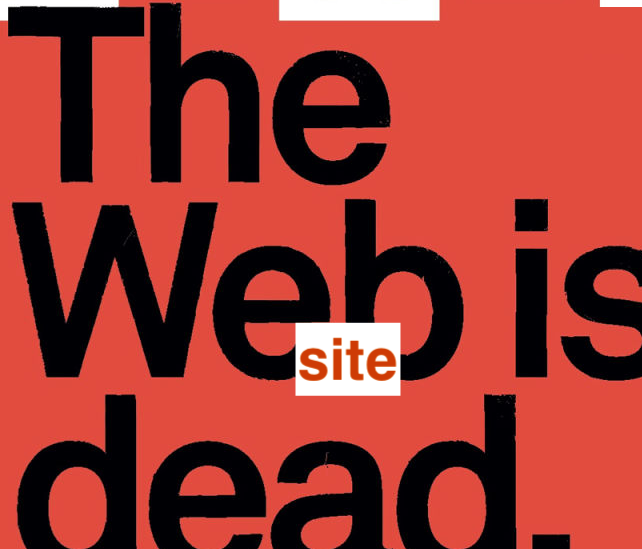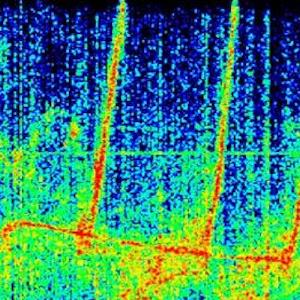Western classical music for Hollywood is a bulwark, call it one of the foundational pillars. The sound, upon which the image of post-war American culture, class and power proliferated allover the world. The presence of classical music across Hollywood movies is universal. Why it's the case with most mainstream cinema (Bollywood, Chinese, European etc) Yet that music and it's aesthetics did not originate in the U.S. Instead it arrived from various parts of Europe and Russia, over time, many times as a consequence of persecution and exile, coupled with nostalgia and the loss of identity. The opulent orchestral sounds that we (still) hear in big Hollywood films today can be traced down to European and Russian roots. Then is it fair to say, that the music of Star Wars or Titanic is eventually a transmutation of Wagner and Vivaldi? Not so easily, but the music tells the story...
As part two of Symphony and Destruction, we trace the curious lives of four composers, who influenced and built the initial trajectory of classical music in Hollywood (1930s to 1970s). Composers who placed new ideas of an ever-extended tonality, into definitive forms and roles. The disintegration of complex forms, into fractional image friendly music. A harp etude for a love scene. A furious Wagnerian orchestra for a war scene. A ramping brass quintet for a daring escapade. Solo piano for snowy desolate winters - coral acapellas to signify spring - string ensembles as bright as the summer sun - soothing cellos to mark the falling leaves of autumn. There is a 'score' ready for every conceivable image and mood. Today, most movie music is simply another delivery system of templates. And there are millions of templates to play with. Yet, that is the short end of business and routine. Something far from what was envisioned by Arnold Schoenberg, Sergie Rachmaninoff, Béla Bartók and Igor Stravinsky, during a period marked by progress, excitement and proliferation of western classical music in mainstream cinema.
Batman bashing the evil guys.. Kate and Leonardo with their arms stretched out on the bow of the Titanic.. Darth Vader looking over the galaxy on the verge of conquest.. Forrest Gump running forever.. The Gladiator ready to take on savage animals and an equally rabid emperor.. Shrek and Donkey in a deep moral crisis.. American Serial Killer's face smeared in fresh blood.. Avatar and the clash of civilizations.. Harry Potter and the no-brain legacy of white flight and magic.. Recall what you will from a major Hollywood blockbuster. All the grandiosity, appeal, violence, heroism, horror, crisis, romance, sex, suspense, drama, history, fantasy and all the action.
That immense landscape, almost always rests upon one form of western classical music or another. The greatest Hollywood composers have written the grandest cinematic scores, for almost every conceivable occasion, sentiment and action - across thousands and thousands of blockbuster movies, for almost a century now. All the spectacles we mentioned above (and a million others) would indeed appear insufficient, not so virile and dare we say dolt, without the universal presence of 20th century classical music. “For a long while, Hollywood continued the magic lantern theatrical experience that Wagner imported for his Festspielhaus...” states a new essay by J. Mauceri Stanford University, exploring the advent of western classical music in Hollywood.
"Arnold Schoenberg influenced three generations of Hollywood Music composers, such as John Williams, Wendy Carlos, George Gershwin, Hans Zimmer and Max Steiner. The German composer's biggest contribution to classical music is the gradual dissolution, call it abandonment of the twelve tone system - opening vistas previously not imagined, something incredible for future composers ..." writes Alex Ross in his book, The Rest Is Noise. Arnold Schoenberg escaped from Paris, while on vacation, to England and then eventually to the U.S. in July 1933. Widespread antisemitism in Europe, marked the flight of many German (Jewish) composers, as we read in part-one. Schoenberg was a fairly well known composer in Europe, yet his initial foray into the American scene remained low-key for years, shuffling academic jobs in Boston, Michigan and later in California. In 1942, Schoenberg received his citizenship and moved to Los Angeles - home to Hollywood stars and composers. His credibility and talent, which was previously unknown to composers like George Gershwin and starlets like Shirley Temple and Cary Grant proved to be strategic. As Gershwin later wrote "Schoenberg looked forward to a time when, boys and girls would whistle serial music.." (biography by Christopher Small).
Even as Schoenberg did not compose for any Hollywood blockbuster, his influence is tremendous - compositions, concertos and characteristic harmonic structures became widely circulated in American conservatories. The term "European Wunderkinder" signifies the 'creme de la creme' of classical composers, who left Europe in the wake of war and persecution - of which Arnold Schoenberg is considered a pioneer. Followed by virtuosos like Max Steiner, Erich Wolfgang Korngold, Miklós Rózsa, Dimitri Tiomkin and Franz Waxman. Who in turn inspired the next generation of Hollywood's "Symphonists" such as Elmer Bernstein, Jerry Goldsmith, Alex North and Wendy Carlos. That line of influence continues today with Danny Elfman, John Williams and Howard Shore. An example of Schoenberg's process (use of Dodecaphony) is audible in Danny Elfman's score for Edward Scissorhands. "Schoenberg kept revising the 12 tone system, throughout his life, eventually abandoning the concept of a root note or key" says musicologist Peter Franklin. Ironic and very curious was Schoenberg's superstitious nature and corresponding bouts of depression. The composer suffered from triskaidekaphobia (the fear of the number 13), and according to friend Katia Mann, he feared many times, that he would die during a year that was a multiple of 13. He died on Friday 13 July 1951, shortly before midnight..
Sergie Rachmaninoff and Igor Stravinsky were Russian virtuosos, eventually acquiring fame inside the American spectre, during a period when Hollywood was at it’s initial blaze. Both fled Russia, at different points, yet on the same timeline, which marked the rise of Stalinism. The dictator is well know for the persecution and death of thousands of Russian academics, writers, poets, dramatists, musicians and common people. Part one, throws light on the classical music of ‘Mother Russia’. The legacy of Rachmaninoff and Stravinsky are distinct, yet both permeating into the American background score early in it's formation.
Igor Stravinsky was born near St. Petersburg of Polish-Russian ethnicity. A student of Nikolai Rimsky his career as a classical composer rose steadily during 1905-1915. A period in which Russia went from through considerable destruction and change. The new Russian specter was not something Stravinsky and his peers held in pride, as one by one they moved to Vienna, Switzerland and France. “The main reason Igor Stravinsky moved to Switzerland was to access royalties of his compositions. He was convinced that financial prospects back home were finished, because the new USSR had terminated bourgeois privilege and erstwhile patronage” writes Alex Ross in The Rest Is Noise. In 1939, at the wake of Germany invading Poland and Austria, Stravinsky made an exit, to the U.S. taking the academic route to Boston and then to Michigan in 1941. Walt Disney acquired the rights to his composition (The Rite of Spring) for the movie Fantasia, triggering Hollywood offers and access to big studios. In 1944, Stravinsky was fined $100 for re-arranging the Star Spangled Banner to a dominant major seventh harmony by Boston District Court.
In 1946, Stravinsky became an American citizen and he solicited Boosey & Hawkes (publishers) to copyright his complete catalogue. The five-year contract contained a whopping guarantee of $50,000! Stravinsky appeared on the cover of Time magazine, as America’s #1 classical composer. He began using serial compositional techniques such as Dodecaphony, the twelve-tone technique originally devised by Schoenberg. “Stravinsky lead a transition of western classical music, leaving it’s erstwhile place (opera, ballet, orchestra etc) towards wider public appeal, as felt through Hollywood movies, radio shows and even Coco-Chanel propaganda” writes Theodore Adorno in his essay Philosophy of Modern Music (1973). Stravinsky's music remained censored in USSR. He never returned home, even as the censorship was lifted in the late-60s. In 1971 Stravinsky died of heart failure at the age of 88. As per his wishes, he was buried in the Russian corner of the cemetery in the island of San Michele Italy - close to the tomb of compatriot Sergei Diaghilev.
Sergie Rachmaninoff entered a decline following Tchaikovsky's death. He lacked the inspiration to compose, and eventually gave up his chair at the conservatory in Moscow. Throughout his life, he battled periods depression and anxiety, which may have formed a part of his daring approach to music. Rachmaninoff was born of Russian aristocracy, and the October revolution marked the end of privilege and class domination (of centuries) for many artists like Rachmaninoff. It also signaled the flight to the west, in fear of communist persecution or better prospects. Deeply effected by the loss of privilege, homeland and family members who died along the way, Rachmaninoff remained self-critical and astute through his life. Rachmaninoff reached the U.S. in 1919 practically penniless, a journey which started in St. Petersburg moving to Finland, Sweden, Denmark and Norway huddling inside trains, buses and eventually on a transatlantic ship. “Rachmaninoff deeply opined about returning to Russia throughout his life. The yearning can be felt in his correspondence with his relatives in Russia and even sending money to many of his friends and family in St. Petersburg” writes Geoffrey Norris.
Like many immigrants, Rachmaninoff applied his talent in roles previously not imagined. He composed more than 100 piano rolls for the Ampico Piano Company (automated pianos for bars and restaurants). He scored countless tunes for small ensembles, recorded and published by Victor RCA for over a decade. Victor RCA’s owner Thomas Edison was practically deaf to classical music. It can be said that Rachmaninoff, by chance or design became the first classical composer to opt for a recording career, instead of the opera hall or the radio. Dozens of Rachmaninoff's recordings are acknowledged classics, especially those he composed during the initial burst of recorded music (1925-35) in vinyl format.
He could hear a piece of music, even a symphony, then play it back the next day, the next year, or years later - something very uncanny, his capacity for retention of music. The music composed by Rachmaninoff speaks in volumes rather that the accolades, Compositions which eventually proliferated into the fabric of American life - at bars and restaurants, on the radio, at shopping malls and gas stations. Why many Rachmaninoff pieces ended up in Tom & Jerry cartoon shows. “By 1940, Rachmaninoff had written more than a hundred title compositions, for RCA Victor, MGM, Walt Disney and 20th Century Fox” writes Geoffrey Norris. A few days after his performance at the Hollywood Bowl in L.A. his health collapsed rapidly, as doctors advised him to stop all work. He died 28th March 1942, two days before his 70th birthday.
Béla Bartók once said “folk is the poor cousin of high classical art” As many experts would differ on the claim, one can say with certainty that Bartók lead the way to create Ethnomusicology - study of music from the cultural and social aspects of the people who make it. Bartók and Liszt are considered Hungary’s most prolific classical composers. The former made a remarkable career based on the marriage of folk and classical, and the latter an archetype of imperial symphony. Both piano virtuosos. “Bartók left Hungary for various conflicts which broke out in his life, personally and as an artist. Politically, he was wary of the communists as well as the Nazis and the prevailing bourgeois patronage of classical music. He collaborated with Turkish, Serbian, Slav and Russian folk musicians of the day, which is now considered avant-garde value." - The Rest Is Noise. His flight to America was a precursor to the rapid rise of nationalism and German hegemony within Hungarian society. Having borrowed a modest sum of money from Zoltán Kodály, Bartók and his wife Ditta Pásztory fled to Paris in October 1938, weeks later making their way to Lisboa Portugal, eventually boarding a transatlantic carrier bound for New York.
Unlike Rachmaninoff and Schoenberg, Bartók never felt at home in America. In a letter (1941) to his friend Zoltán, the composer laments - “I am unable to compose these days and so for months now… as I look at the endless rows of buildings divided by roads, upon which thousands of vehicles pass by every hour, but there's very few human beings visible”. Supported by a grant from Columbia University, Bartók and Ditta worked on a large collection of Serbian, Hungarian, Polish and Croatian folk songs. Initial economic difficulties were gradually mitigated by publication royalties, stints of teaching and performance tours. Yet unlike Stravinsky and Schoenberg, Bartók did not clinch big publishing deals. Hollywood fame eluded him, as much as he eluded the rising fame of “European Wunderkinder” composers in Hollywood. Instead Bela and Ditta dedicated themselves to the philharmonic orchestra and to learn from emerging styles such as Jazz and Bebop.
Bartók's academic scene, was thronged by young American composers - some of who went unto to compose for Hollywood, applying his aesthetics on piano, violin and cellos. Samuel Barber, Yehudi Menuhin and Steve Reich acknowledge Bela Bartók as mighty influential. Bartók was diagnosed with Leukaemia in 1942. Americans responded to the composer’s plight with generosity. The American Society of Composers, Authors and Publishers, of which Bartók was not a member, agreed to pay all of his medical expenses. As Hungary lay devastated by the end of 1944, Bartók also subsumed into prolonged illness, leading up to his death in September 1945. His funeral attended by less than ten people.
Special thanks to Alex Ross (The Rest Is Noise)































0 -